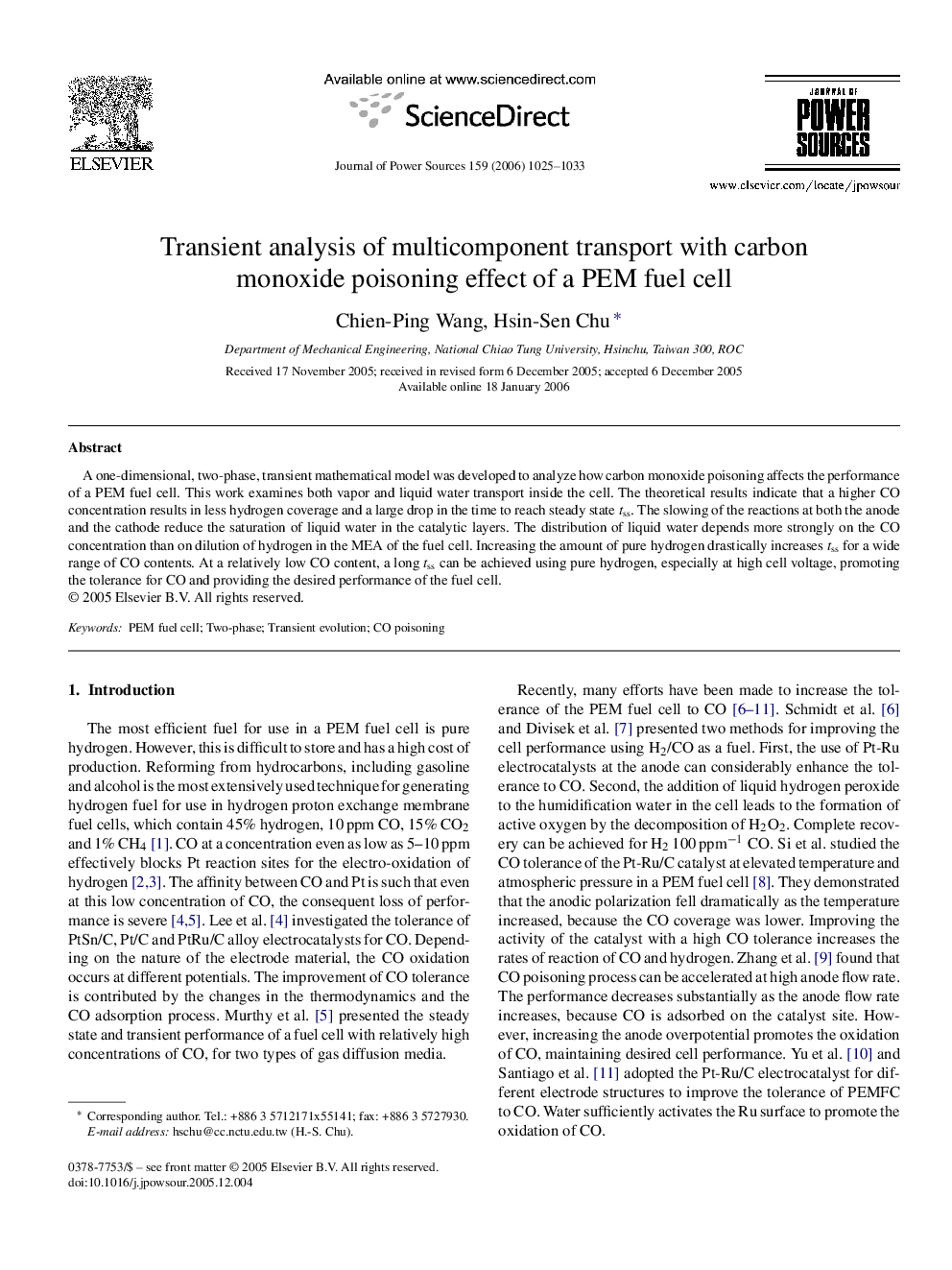| Article ID | Journal | Published Year | Pages | File Type |
|---|---|---|---|---|
| 1287255 | Journal of Power Sources | 2006 | 9 Pages |
Abstract
A one-dimensional, two-phase, transient mathematical model was developed to analyze how carbon monoxide poisoning affects the performance of a PEM fuel cell. This work examines both vapor and liquid water transport inside the cell. The theoretical results indicate that a higher CO concentration results in less hydrogen coverage and a large drop in the time to reach steady state tss. The slowing of the reactions at both the anode and the cathode reduce the saturation of liquid water in the catalytic layers. The distribution of liquid water depends more strongly on the CO concentration than on dilution of hydrogen in the MEA of the fuel cell. Increasing the amount of pure hydrogen drastically increases tss for a wide range of CO contents. At a relatively low CO content, a long tss can be achieved using pure hydrogen, especially at high cell voltage, promoting the tolerance for CO and providing the desired performance of the fuel cell.
Related Topics
Physical Sciences and Engineering
Chemistry
Electrochemistry
Authors
Chien-Ping Wang, Hsin-Sen Chu,
